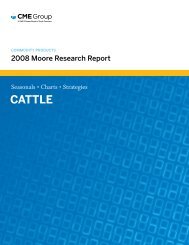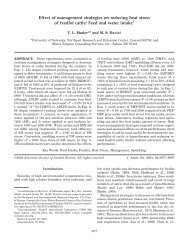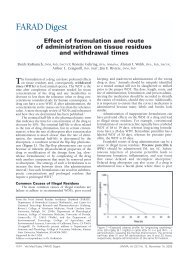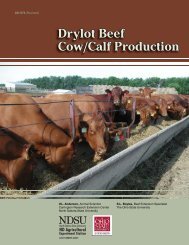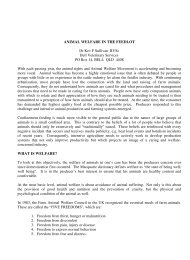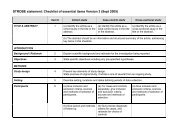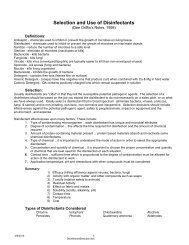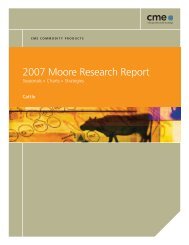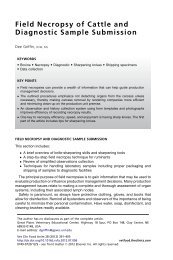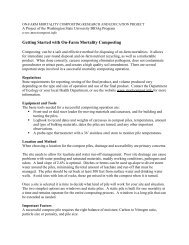CRIMES WITHOUT CONSEQUENCES - gpvec
CRIMES WITHOUT CONSEQUENCES - gpvec
CRIMES WITHOUT CONSEQUENCES - gpvec
Create successful ePaper yourself
Turn your PDF publications into a flip-book with our unique Google optimized e-Paper software.
4. Federal Humane Slaughter Law<br />
Congress enacted the Humane Methods of Slaughter Act in 1958 “to establish the use of<br />
humane methods of slaughter of livestock as a policy of the United States, and for other<br />
purposes.” 74 The Act covers ante-mortem handling of animals, in addition to the slaughter<br />
process itself. It requires that animals be made insensible to pain by “a single blow or<br />
gunshot or an electrical, chemical or other means that is rapid and effective” prior to<br />
being shackled, hoisted or cut. In addition to these stunning methods, ritual slaughter in<br />
accordance with the requirements of a religious faith is deemed to be humane. The Act<br />
also provides a specific exemption for ritual slaughter.<br />
7 U.S.C. Sec. 1901. Findings and declaration of policy<br />
The Congress finds that the use of humane methods in the slaughter of livestock prevents<br />
needless suffering; results in safer and better working conditions for persons engaged<br />
in the slaughtering industry; brings about improvement of products and economics in<br />
slaughtering operations; and produces other benefits for producers, processors, and<br />
consumers which tend to expedite an orderly flow of livestock and livestock products in<br />
interstate and foreign commerce. It is therefore declared to be the policy of the United<br />
States that the slaughtering of livestock and the handling of livestock in connection with<br />
slaughter shall be carried out only by humane methods.<br />
Sec. 1902. Humane methods<br />
No method of slaughtering or handling in connection with slaughtering shall be deemed<br />
to comply with the public policy of the United States unless it is humane. Either of the<br />
following two methods of slaughtering and handling is hereby found to be humane:<br />
(a)<br />
(b)<br />
in the case of cattle, calves, horses, mules, sheep, swine, and other livestock,<br />
all animals are rendered insensible to pain by a single blow or gunshot or an<br />
electrical, chemical or other means that is rapid and effective, before being<br />
shackled, hoisted, thrown, cast, or cut; or<br />
by slaughtering in accordance with the ritual requirements of the Jewish faith<br />
or any other religious faith that prescribes a method of slaughter whereby<br />
the animal suffers loss of consciousness by anemia of the brain caused by the<br />
simultaneous and instantaneous severance of the carotid arteries with a sharp<br />
instrument and handling in connection with such slaughtering.<br />
Sec. 1906. Exemption for ritual slaughter<br />
Nothing in this chapter shall be construed to prohibit, abridge, or in any way hinder<br />
the religious freedom of any person or group. Notwithstanding any other provision of<br />
this chapter, in order to protect freedom of religion, ritual slaughter and the handling or<br />
other preparation of livestock for ritual slaughter are exempted from the terms of this<br />
chapter. For the purposes of this section the term “ritual slaughter” means slaughter in<br />
accordance with section 1902 (b) of this title.<br />
74 7 U.S.C. 1901 et seq.<br />
29




